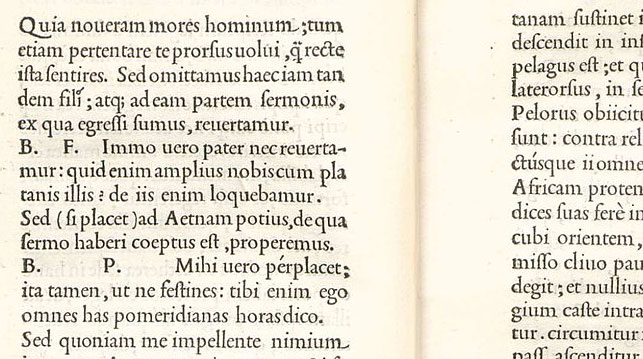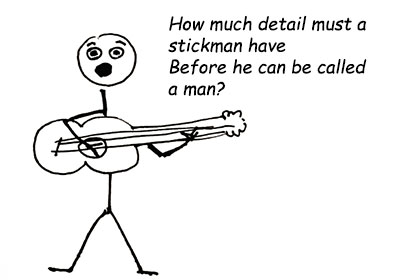
Last time I talked about sentence interrupters: em-dashes, parentheses, and commas. These typographical markers indicate information interpolated into the body of a sentence in the form of a dependent clause. Such passages are supplemental in nature. They add depth and background, but you can still read around the interpolations—that is, skip over them without losing or altering the essential meaning of the sentence.
This time, we’ll talk about two marks that set off complementary information, phrases and clauses without which a sentence is incomplete: the colon and the semicolon.
Dependent and Independent Clauses
Use the colon to mark the division between two clauses of unlike kinds: that is, between an independent clause (i.e., one that can function on its own as a complete sentence, having a subject and a verb) and a dependent clause (i.e., sentence fragment). The colon separates the two, which are closely related in topic, and also joins them. Although the independent clause is itself a complete sentence, the dependent clause makes it more complete. It might give a proper name to something mentioned in the independent clause or answer an implicit question raised therein.
A phrase coined by Pete Seeger sums up folk music’s topical nature and role as an agent for change: “a singing newspaper.”
There are a couple of important things to note here. First, when used in this fashion, one half must be a complete sentence. You can’t use a colon to splice together two dependent clauses. For instance, you wouldn’t use a colon for:
Pete Seeger described folk music as: “a singing newspaper.” (wrong)
You would simply say:
Pete Seeger described folk music as “a singing newspaper.” (right)
Some sources will tell you that the colon must always come after the independent clause. But the order can occasionally be reversed, especially in informal writing.
“A singing newspaper”: That’s how Pete Seeger defined folk music.
Get a free sample proofread and edit for your colons and semicolons.
Two professional proofreaders will proofread and edit your colons and semicolons.
Lists
You can use a colon to introduce a list (either run-in or vertical) that starts after a complete sentence. In this construction, the colon takes the place of an introductory phrase like “consisting of,” or “such as,” or “namely.” For example:
Dylan scandalized Newport by performing with his first electric band: guitarist Mike Bloomfield, keyboardists Al Kooper and Barry Goldberg, and the rhythm section of Sam Lay and Jerome Arnold.
In the example above, the items are separated by commas. But if the items are more grammatically complex, you might use semicolons instead for clarity:
He played with Mike Bloomfield, lead guitar; Al Kooper, organ; Barry Goldberg, piano; Sam Lay, drums; and Jerome Arnold, bass.
Separating list items with semicolons is particularly useful if they contain punctuation likely to cause confusion:
The Newport Folk Festival drew many big names, including Phil Ochs; Peter, Paul and Mary; and Judy Collins.
Note that “Peter, Paul and Mary” is a single item, but the comma in the name would make a comma-separated list difficult to parse. “Phil Ochs, Peter, Paul and Mary, and Judy Collins” could be read as including a solo act called simply “Peter” and a duo called “Paul and Mary.”
Two Independent Clauses
 Occasionally, you will have two independent clauses/complete sentences that are of equal weight and closely related to each other. You could render each clause as a complete sentence, separating them with periods, and be grammatically correct. But let’s say the two clauses are two halves of the same complete thought: point and counterpoint, cause and effect. In this case, they are most effectively separated with a colon or semicolon.
Occasionally, you will have two independent clauses/complete sentences that are of equal weight and closely related to each other. You could render each clause as a complete sentence, separating them with periods, and be grammatically correct. But let’s say the two clauses are two halves of the same complete thought: point and counterpoint, cause and effect. In this case, they are most effectively separated with a colon or semicolon.
When the second clause explains or illustrates the first, use a colon:
For Dylan, folk music was just a means to an end: he had bigger things in mind.
When the two independent causes would typically be joined by a coordinating conjunction (e.g., and, but, because, yet, so), they may instead be separated by a semicolon when the conjunction is omitted.
The folk audience was still a niche audience; it was full-on pop stardom that Dylan craved.
The semicolon in this construction replaces “but” or “and,” so you don’t use a conjunction and a semi-colon together. Note also that the first word after the semicolon should not be capitalized.
Those are the basics of colons and semicolons! If you have specific questions, feel free to ask them in the comments.
Jack F.
Get a free sample proofread and edit for your colons and semicolons.
Two professional proofreaders will proofread and edit your colons and semicolons.
Get a free sample proofread and edit for your document.
Two professional proofreaders will proofread and edit your document.
We will get your free sample back in three to six hours!